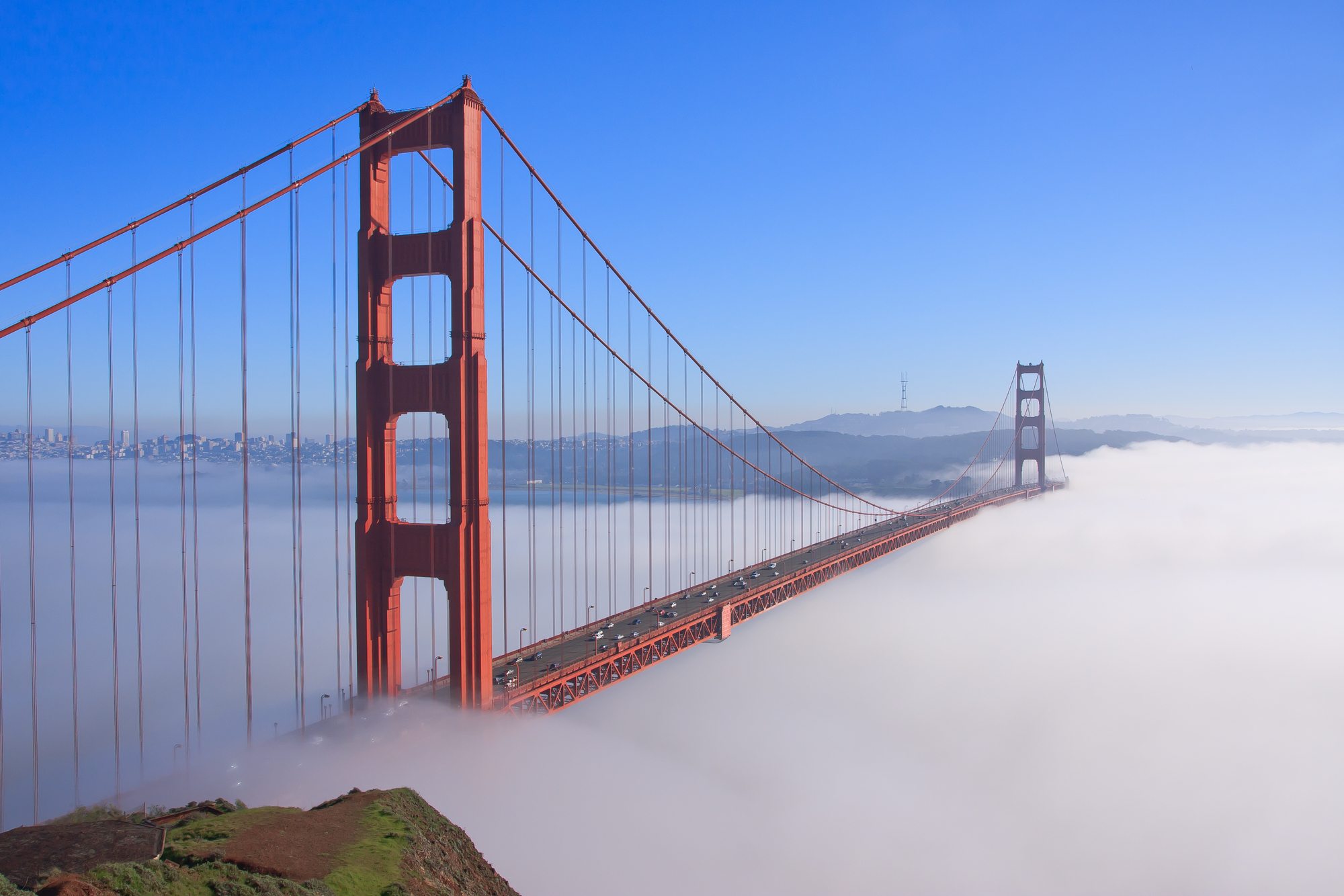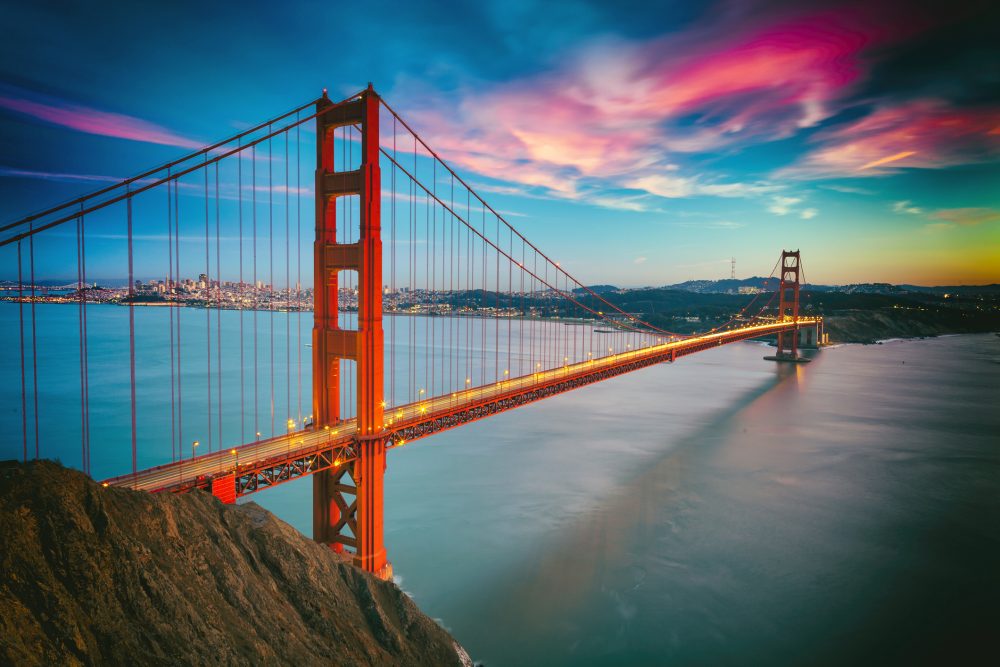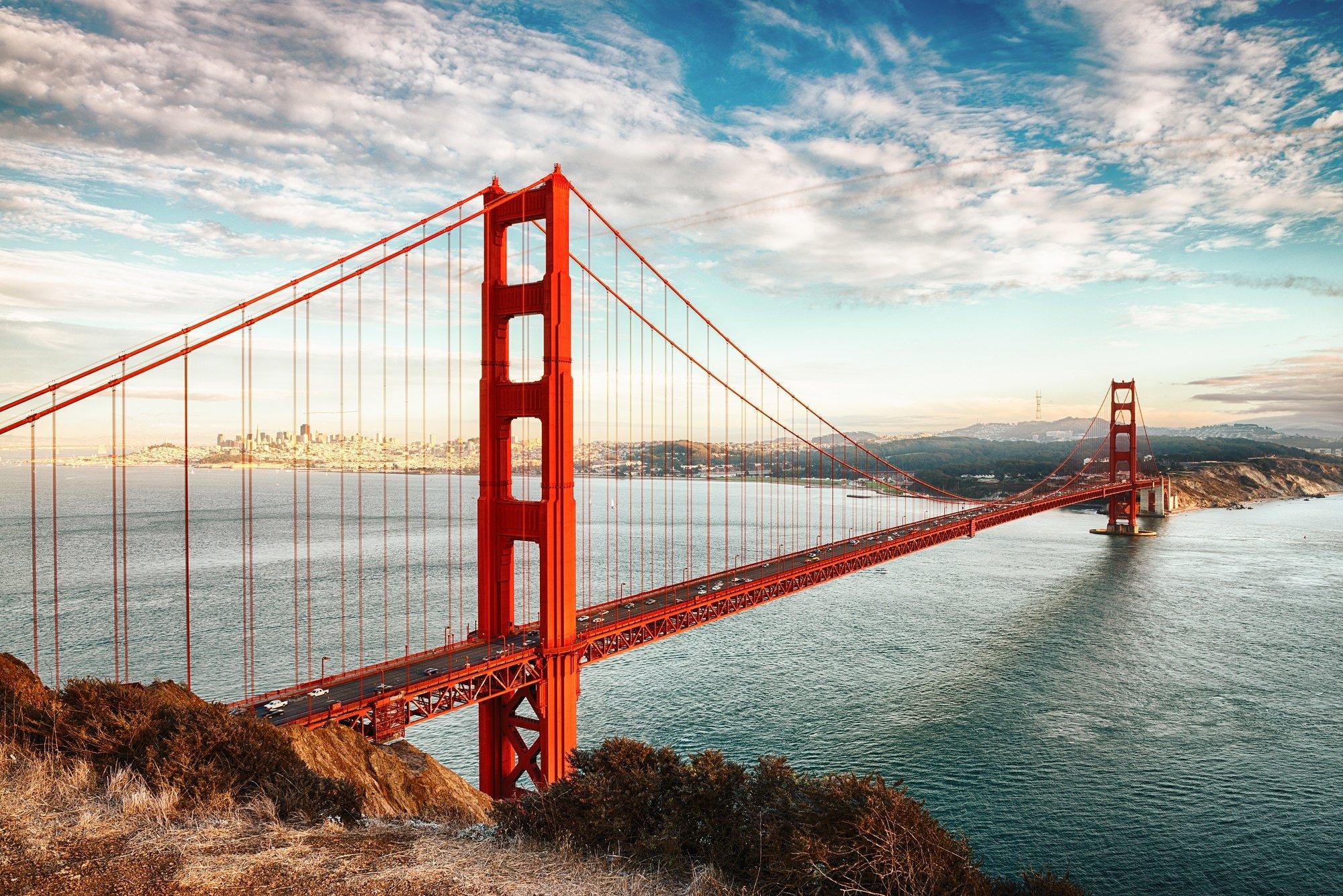The Golden Gate Bridge is a suspension bridge spanning the Golden Gate strait, the opening to San Francisco Bay from the Pacific Ocean. The Golden Gate Bridge was built between 1933 and 1937. It is well known for both its beauty, and as an engineering marvel.

How much did it cost to build the golden gate bridge
The Golden Gate Bridge is a suspension bridge spanning the Golden Gate, the opening of the San Francisco Bay into the Pacific Ocean. It was completed in 1937, after nearly ten years of construction.
The Golden Gate Bridge is one of the most recognizable landmarks in California and a symbol of San Francisco. The bridge is located directly above the city of San Francisco. It connects the city with Marin County on its north side, and it provides a vital link between San Francisco International Airport (SFO) and points northward towards Sacramento, Oakland and beyond to Sacramento International Airport (SMF). The bridge’s northern terminus is at Highway 101 in Sausalito and its southern terminus is at State Route 1 near Mill Valley.
The bridge’s main span is 4,200 feet (1,280 m) long with an additional 965 feet (294 m) for each side span.[3] It weighs more than 28 million pounds (12 million kg).[4]
The Golden Gate Bridge was built using more than 100,000 tons (100 kilotonnes) of steel,[5] which cost about $35 per ton for raw materials plus fabrication costs.[6] The concrete approaches were built out from land by sinking caissons
The Golden Gate Bridge is a suspension bridge spanning the Golden Gate, the opening of the San Francisco Bay into the Pacific Ocean.
The bridge was built by the American Toll Bridge Company (ATBC), whose chief engineer was Joseph B. Strauss. It was opened on May 27, 1937, by U.S. President Franklin D. Roosevelt after he had dedicated the bridge earlier in the day.[2] The total length of the bridge is 8,981 feet (2,737 m) with a main span of 4,200 feet (1,300 m). At its completion it was the longest suspension bridge in the world. It was also one of the first bridges to use steel plate girders for its construction. Until 1964 it had carried U.S. Route 101. The toll for crossing for 75 years was 50 cents per car plus 5 cents per pedestrian; bicycles were not allowed on this bridge until 1988 due to its narrow sidewalks.[3] [4] As of 1992[update], tolls were $1 each way.[5]
On May 27, 2007,[6] it became free to cross on foot and bike as part of a pilot program called S
The Golden Gate Bridge is a suspension bridge spanning the Golden Gate, the opening of the San Francisco Bay onto the Pacific Ocean. The American Society of Civil Engineers has called it one of the Seven Wonders of the Modern World.[1] It was opened to traffic on May 27, 1937, and built under budget with a total cost of $35 million.
The bridge’s success as an engineering undertaking led to its use as a symbol of San Francisco and California, as well as becoming one of the world’s most recognizable landmarks. The Golden Gate Bridge is located in the city of San Francisco, spanning the Golden Gate (north) opening to the Pacific Ocean. It connects Fort Point at the southern foot of the bridge with Marin County to the north.[2]
The bridge name was derived from this opening, which passes under it between two granite headlands on either side. It has become one of the world’s most famous bridges. Its beauty is often cited as being one reason for San Francisco’s reputation as a city that has shaped international perceptions about its character and culture.[3]

The Golden Gate Bridge is often referred to simply as “the Golden Gate”. On average, 50-70%
The Golden Gate Bridge is a suspension bridge spanning the Golden Gate, the opening to San Francisco Bay. It was completed in 1937, the year before World War II, and is one of America’s most recognizable landmarks. The bridge spans 1.28 miles (2.17 km), with a main span of 4,200 feet (1,280 m). The total length of its construction was 35 months from 1933 to 1937, at a cost of $35 million dollars (equivalent to $1.4 billion in 2016).
The Golden Gate Bridge opened to foot traffic on May 27th 1937 and was opened for vehicular traffic on May 28th 1937. The first person to cross the bridge was automobile salesman W. D. Mclntyre who was given the honor by city officials for driving the first car across it.
The bridge had its fair share of problems from day one with many people claiming that it would be impossible for any ship to pass under it because of its height above water level which made it practically impossible for any ship’s masthead lights to be seen from below due to glare from sunlight reflecting off the ocean surface around San Francisco Bay area during daylight hours when foggy conditions are absent during periods
The Golden Gate Bridge, connecting San Francisco and Marin County, California, is one of the most recognizable landmarks in the United States. It was completed in 1937 at a cost of $35 million (about $1.3 billion today).
The bridge is 4,200 feet long and rises 200 feet above the water. It has two 590-foot towers and a main span of 4,200 feet — the longest in the world when it opened. The two towers are painted International Orange, which was chosen to complement the natural surroundings and help ships see them from afar.
The bridge may be best known for its dramatic views of San Francisco Bay, but it has also been featured prominently in numerous films and television shows over the years — including Alfred Hitchcock’s Vertigo (1958) and American Beauty (1999).
Golden Gate Bridge Facts
Length: 8,981 feet (1.7 miles)
Height: 746 feet above the water
Number of cables: 2 main cables and 2 smaller back-up cables
Number of steel tendons (cables): 1,200
Number of suspender ropes: 19
Total weight of steel in the bridge: 860,000 tons (equivalent to 20 Statues of Liberty)
Cost to build: $35 million – equivalent to $23 billion today
The Golden Gate Bridge is a suspension bridge that connects San Francisco to Marin County, California. Completed in 1937, it has become an international symbol of San Francisco and California. The Golden Gate Bridge was the longest suspension bridge span in the world when it opened in 1937. Although the length of the entire Golden Gate Bridge is 8,981 feet (2,737 m), the main span is 4,200 feet (1,300 m). The bridge’s three towers rise 346 feet (105 m) above the water.
The Golden Gate Bridge was built from 1933 to 1937 as part of a U.S. federal project to link San Francisco and Los Angeles with highways and railways across the country. When it was completed, it allowed motorists to drive from New York City to Los Angeles without having to take a ferry or make any other stops along the way.
The Golden Gate Bridge is a suspension bridge spanning the Golden Gate, the opening of the San Francisco Bay into the Pacific Ocean. The bridge was built to provide a safe and fast link between San Francisco and the Peninsula. The bridge spans 1.7 miles (2.76 km) and rises 746 feet (227 m) above mean sea level at its highest point above water.[1]
The main span of the bridge is 4,200 feet (1,300 m)[2][3] and has a vertical clearance of 220 feet (67 m).[4]
The current structure was completed in 1937 after five years of construction,[5] during which time two workers died[6] and one other was injured falling from the structure.[7] In 1959 a second deck was added to accommodate increased traffic flow on U.S. 101; this had already been planned for as early as 1935 by Chief Engineer Joseph B. Strauss[8][9] but delayed due to lack of funding.[10] A $1 toll was collected until April 30th, 1939 when it was removed due to high maintenance costs.[11][12]
The bridge’s main span is 4,200 feet (1.
The Golden Gate Bridge is a suspension bridge spanning the Golden Gate, the opening between San Francisco Bay and Pacific Ocean. The bridge connects the city of San Francisco on the northern tip of the San Francisco Peninsula to Marin County, California on the southern end. In addition to its aesthetic appeal, the structure’s location was selected to maximize views of the bay, both from its location and from within. The strait is 3 miles (5 km) wide at its narrowest point and 90 feet (27 m) deep, which made anchoring ferries in place difficult.[2]
Since 1964,[3] it has been one of the most popular suicide sites in the world.[4] There have been 746 confirmed deaths by jumping off the bridge since it opened on May 27, 1937.[5] It was declared a National Historic Landmark in 1987,[6] and will be listed as one of America’s 11 Most Endangered Places 2019 by America’s 11 Most Endangered Places.[7]
The Golden Gate Bridge, also called the GG Bridge or simply The Bridge, is a suspension bridge spanning the Golden Gate, the opening to San Francisco Bay in California. The world’s third longest suspension bridge following the Akashi Kaikyō Bridge in Japan and Verrazano-Narrows Bridge in New York City. It was completed on May 27, 1937 and spans 1.7 miles (2.7 km). It has two towers, one on each side of the strait, with a total height of 746 feet (227 m).
The Golden Gate Bridge opened to traffic on May 28, 1937 at 12:50 p.m., six months after President Franklin D. Roosevelt pressed a gold telegraph key in Washington D.C., signaling its completion to the world press and dignitaries gathered for the occasion at its southern end adjacent to Fort Point.[1][2] The opening ceremony was attended by 200,000 people and included an address by Governor Frank Merriam and a parade led by U.S. Air Force General Jimmy Doolittle.[3] Afterward there were fireworks, an air show and an airplane flyover.[4]
The southern end of the bridge features a tower that houses an art deco sculpture titled “
